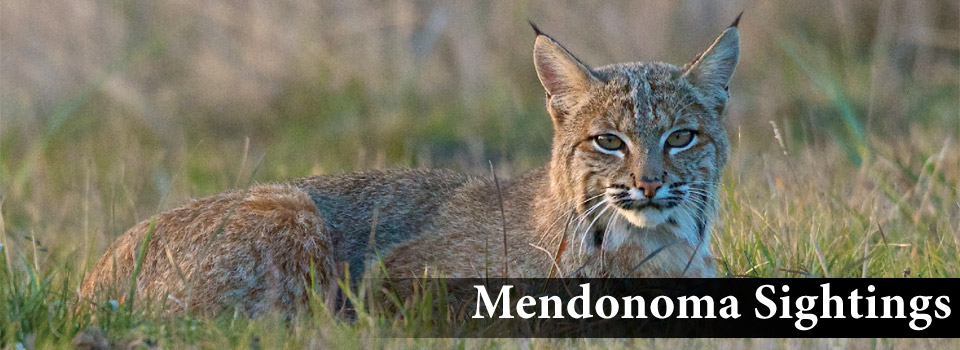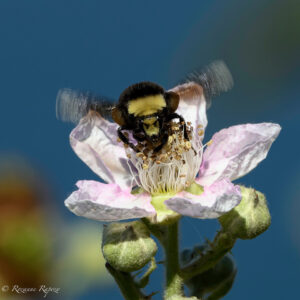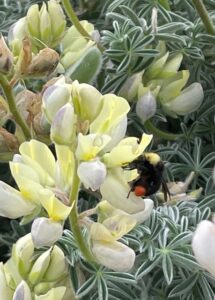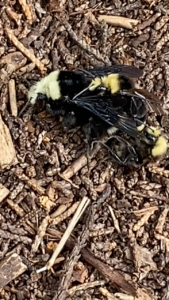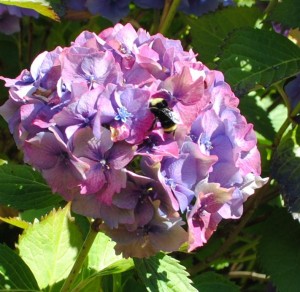Connie King wrote, “I thought you might enjoy seeing this shot of pollen-laden bees feasting on a Matijilla Poppy from our yard today. Can you believe those bright yellow thighs!?! Or maybe that’s what the ‘bees knees’ is all about.”
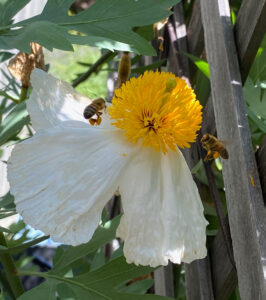
I checked with entomologist Mary Lou Flint. She wrote, “Definitely Honey Bees. Nice shot of their well-filled pollen baskets! It’s amazing how much pollen, and nectar, they can carry in their ‘saddle bags,’ apparently up to 30% of their weight.”
Honey Bees are not native here but they are used to pollinate many crops. As several people on the Mendonoma Coast have hives of these bees, they are often seen in our gardens, feeding on flowers. I am also seeing them at the small waterfall in our courtyard. They are coming for water!
Here is one of our native bees, a Yellow-faced Bumblebee, photographed by Paul Brewer.
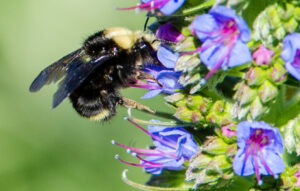
Thanks to Connie and Paul for allowing me to share their photos with you here.
Good news! Several Monarch Butterflies were seen today, one in Timber Cove and another in Gualala. Fingers crossed that we see many more in the days and weeks ahead. Today is a spectacular day of blue skies and warm temps. The fog is AWOL and the air is clear from Saturday's wonderful rain.
